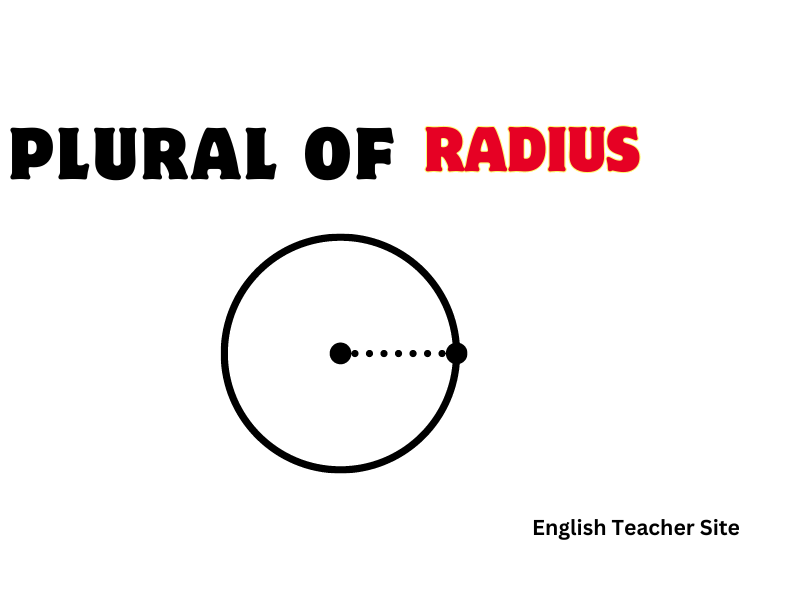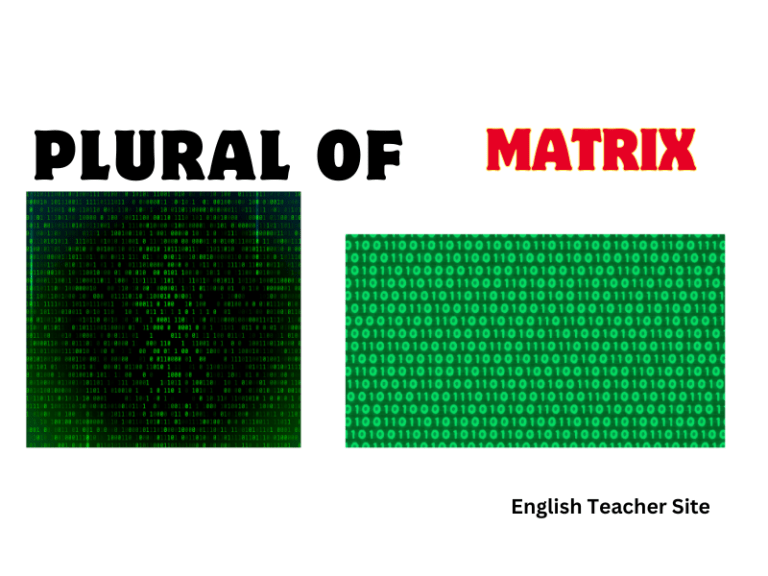What’s the Plural of Radius: Understanding Geometric Terms

- “Radius” has two correct plural forms: “radii” (Latin) and “radiuses” (English).
- “Radii” is typically used in mathematical contexts; “radiuses” is more common in general use.
- The pluralization reflects a blend of Latin origins with English grammar rules.
The plural form of “radius” can be either “radii,” following the original Latin pluralization, or “radiuses,” adapting to the standard English method of adding an -es to form plurals. Interestingly, though both forms are correct, “radii” is often used in mathematical contexts, while “radiuses” may be found in more general language. This dual option in English showcases the language’s propensity to embrace and adapt linguistic elements from different sources.
What’s the Plural of “Radius”?
Accepted Plural Forms
- Radii: The traditional Latin plural of “radius.”
- Radiuses: A more modern plural, aligning with standard English pluralization rules.
Usage of Plural Forms
It’s commonly accepted that both “radii” and “radiuses” are correct, though “radii” is often used in mathematical and technical contexts, whereas “radiuses” may appear in more general language.
Factors Influencing Plural Choice
| Consideration | Preference for “Radii” | Preference for “Radiuses” |
|---|---|---|
| Formality | Academic, technical | Informal, general |
| Tradition | Classic Latin origin | Modern English rules |
Determinants of Pluralization
- Context: In more formal or scholarly writings, particularly in geometry, “radii” is typically preferred.
- Audience: For lay audiences or everyday conversation, “radiuses” might be more easily understood.
- Consonance: The use of “radii” or “radiuses” may depend on the flow or the rhythm of the sentence it appears in.
In educational materials such as mathematics textbooks, “radii” is almost exclusively used. Conversely, in creative writing or less formal texts, authors may opt for “radiuses,” providing an approachable and familiar term to their readers.
Is “Radius” Plural or Singular?
The term radius is singular, referring to a line segment from the center of a circle to its perimeter, or in anatomy, the bone on the thumb side of the forearm. In use, one often describes a single circle or refers to one of the bones in each arm individually.
Consider the two tables below illustrating the contexts in which each plural form is commonly used:
| Form | Use Case |
|---|---|
| Radii | Mathematical and scientific use |
| Radiuses | General and casual use |
And the frequency of usage:
| Plural Form | Frequency |
|---|---|
| Radii | More common |
| Radiuses | Less common |
- Radii:
- The standard plural in geometry and technical fields.
- Reflects the original Latin pluralization.
- Radiuses:
- Considered acceptable in modern English.
- Follows the regular English convention for creating plural forms.
Defining the Word “Radius”
In geometry, the term radius refers to a straight line from the center of a circle to any point on its circumference. It also applies to the length of that line, which is half the length of the diameter — the longest straight line that passes through the center of the circle. The concept of radius is crucial in the field of mathematics, particularly in calculating the area and circumference of circles.
Moreover, the term radius has broader applications beyond geometry. It can denote a specific distance from a central point in various contexts, such as the radius of action or the effective range of a radio broadcast.
Characteristics of a Radius:
- Originates from the center of a circle
- Extends to the circle’s perimeter
- Always half the diameter of the circle
- Vital for calculating the area (A=πr²) and circumference (C=2πr) of the circle
Various Usage of Radius
| Field | Application of Radius |
|---|---|
| Geometry | Fundamental dimension of circles |
| Geography | Describes the distance from a central location |
| Astronomy | Denotes the radial distance of celestial bodies |
What’s the Plural of “Radius”?
The term “radius” has two accepted plural forms. The consolidation of linguistic origins and contemporary usage reveals radii and radiuses as its dual plurals. Here, we explore their applicability and usage.
Firstly, the original Latin plural of “radius” is “radii.” This form is maintained in many English contexts, particularly in mathematical and scientific discourse where precision and tradition hold value. The term “radii” specifically refers to multiple straight lines extending from the center of a circle to its perimeter.
| Singular | Plural |
|---|---|
| radius | radii |
Alternatively, “radiuses” is a plural form recognized in modern English usage. This variation aligns with the standard English pluralization rule of adding “-es” to nouns ending with “us.”
| Singular | Plural |
|---|---|
| radius | radiuses |
Usage examples:
- The architect calculated the radii of multiple circles to design the intricate window.
- The various radiuses of the gears determine the machine’s functionality.
Nouns That End in -us/-i
Examples of Latin Nouns with -us/-i Endings:
| Singular | Plural |
|---|---|
| alumnus | alumni |
| focus | foci |
| stimulus | stimuli |
Words That Follow the -us/-i Conjugation Pattern:
- Cactus becomes cacti.
- Nucleus transforms into nuclei.
- Syllabus changes to syllabi.
Nouns with Irregular Plural Forms:
- Octopus often becomes octopuses or octopi, with the latter being less favored by marine biologists.
- Virus does not follow the pattern and has no standard plural form in English.
“Radius,” Singular, Used in Sentence Examples
In Context of Geometry:
| Sentence Example | Explanation |
|---|---|
| The formula to calculate the circumference of a circle involves multiplying pi ((\pi)) by the diameter, which is twice the radius. | Indicates the relationship between radius and diameter. |
| To find the area of the circle, square the radius and multiply by (\pi). | Demonstrates how the radius is used in area calculation. |
In Everyday Language:
- The storm’s impact was felt within a ten-mile radius of the epicenter.
- The café offers delivery services within a radius of five kilometers.
The term “radius” is also used in contexts beyond geometry:
| Sentence Example | Explanation |
|---|---|
| The real estate agent could only show us homes within a specific radius of the school district. | Here “radius” refers to a zone or area of interest. |
| The wireless network only covers a small radius around the building. | Implies a limited range of network coverage. |
Radiuses/Radii, Plural, in Sentence Examples
To illustrate the use of each term, consider these sentence examples:
Regular Plural Form:
| Singular | Plural (English) | Example Sentence |
|---|---|---|
| radius | radiuses | The circles had varying radiuses depending on their size. |
Irregular Plural Form:
| Singular | Plural (Latin) | Example Sentence |
|---|---|---|
| radius | radii | The two wheels were connected at multiple radii from the center. |
In writing and speech, context often guides which plural form to use:
- When discussing geometry, “radii” is commonly preferred.
- In a more colloquial context where precision is less crucial, “radiuses” can be found.
In summary, both “radiuses” and “radii” are correct, and their usage may vary by context:
- The geometry textbook explained how to calculate the area of a circle given different radii.
- To achieve the design, the architect specified a series of arches with increasing radiuses.
Origin of the Word “Radius”
The term radius finds its roots in Latin, the language that laid the foundation for many terms in the sciences and mathematics. It originally meant staff, stake, or ray of light, showcasing its diverse applications from physical items to abstract concepts related to light and geometry.
| Latin Usage | Meaning in Latin |
|---|---|
| Radius | Rod, Staff, Beam of light |
| Radix | Root |
The word evolved to denote a line segment extending from the center of a circle or sphere to its circumference. Even in its skeletal description, the word indicates a supporting structure akin to the bones in the arm or the spokes of a wheel.
Historical applications of “radius” further reveal its depth:
- Staff or Rod: Analogous to a tool for support or measurement.
- Spoke of a Wheel: Suggesting radial symmetry and essential structure.
- Ray of Light: Signifying straight paths emanating from a source.
The transition from a simple rod to a complex geometrical term carries with it the elegance of the Latin language, imbuing the term radius with precision and utility. Its usage in English retains much of its original flavor, testifying to its lasting influence.
| Geometrical Concept | Description |
|---|---|
| Radius of a Circle | A line from the center to the circumference |
| Radius of a Sphere | A line from the center to the surface |
In modern usage, this term is not only a fixed measurement in geometry but also a variable in many formulas and applications, signifying its mathematical importance. Reflecting the growth of language and science, the word radius articulately binds etymology with practicality.
Sources
2. Harper Douglas, “Etymology of radius,” Online Etymology Dictionary.
My name is Khamis Maiouf. I am the creator of the English Teacher Site, dedicated to providing valuable resources and insights for students around the world. With a passion for education and a commitment to helping students enhance their skills, I aim to make English teaching more effective and enjoyable for both educators and students.






